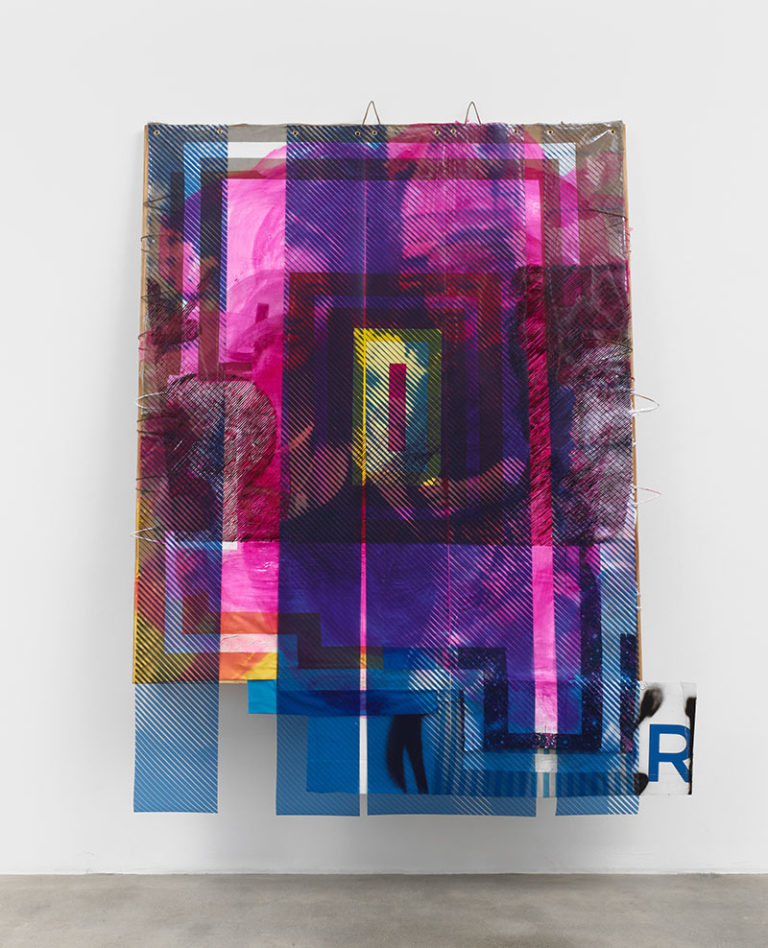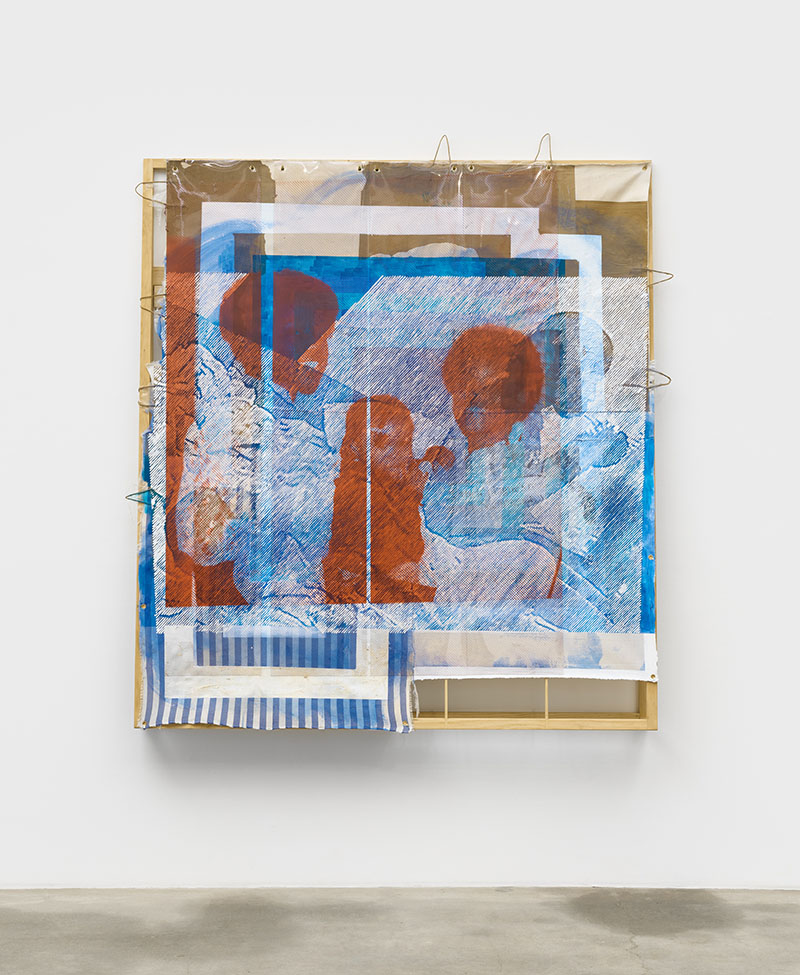Tomashi Jackson’s new solo exhibition, Forever My Lady, is an exploration of propaganda, democracy and civil rights in the United States. Her collaged, sculptural objects combine elements from American and Greek elections—candidate signs, ballots, campaign buttons—and painted and printed images of black families and figures from the Civil Rights Movement. The objects themselves are large in scale, suspended away from the wall and freestanding, and though the full printed image is only recognizable from a distance, the use of small elements such as voting ballots, news clippings and campaign materials demands close examination. In total, Jackson masterfully encourages the viewer to reflect on the impact and injustice of politics on the lives of minorities in the United States, utilizing the storied tradition of collage.
Artists have used collage as a form of political dissidence for decades, notably German artists and activists in the 1930s such as John Heartfield and Hannah Höch. While Heartfield and Höch worked on a smaller scale and primarily outside of the normal gallery space, their use of collage to voice political opinions and speak out against the rising tide of Fascism and destruction of democracy is not unlike Jackson’s own work. Jackson, however, has also combined elements of Josef Albers’ color theory, positioning opposing blues and reds and layering them to produce an almost stereoscopic effect, emphasizing the three-dimensional qualities of her work. But beyond merely color theory, Jackson’s work emphasizes even more of Albers’ philosophy, particularly his teaching methodology. Albers believed the objective of a teacher—especially a fine art teacher—is to pose questions, not provide answers. Jackson embodies this concept in her work, which pushes the viewer to engage critically with the juxtaposed images provided. The objects in Forever My Lady prompt the viewer to question the political actions which subjugated people of color in the United States, from the Reagan-era government-supported crack epidemic to the limitations of voting rights. The printed images of black individuals which act as the unifying image, connecting the disparate collaged elements and fields of color, again remind the viewer of the callous, historic use of people of color as dispensable pawns in American politics. The inclusion of Greek ballots and political materials highlights further the deterioration of democracy, summoning imagery from its origins in ancient Athens, and connects to Jackson’s own recent residency in Greece.

Tomashi Jackson, Girls Time (Heartbreak Hotel), 2020. Image courtesy of Night Gallery.
Forever My Lady is a personal investigation of failed democracy and unjust actions against black Americans, and a reflection on our collective culpability and responsibility to heal the wounds to our own political system.


